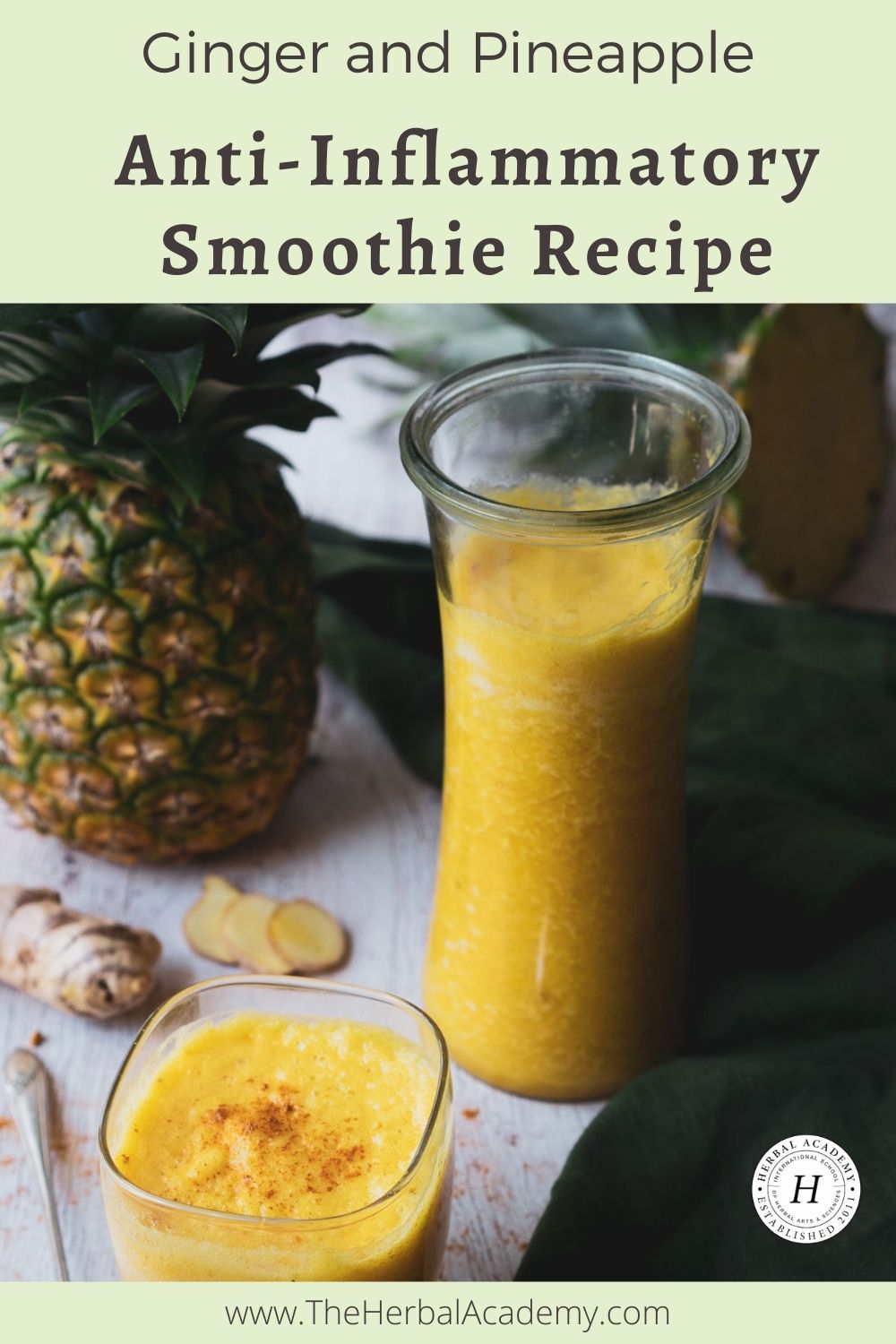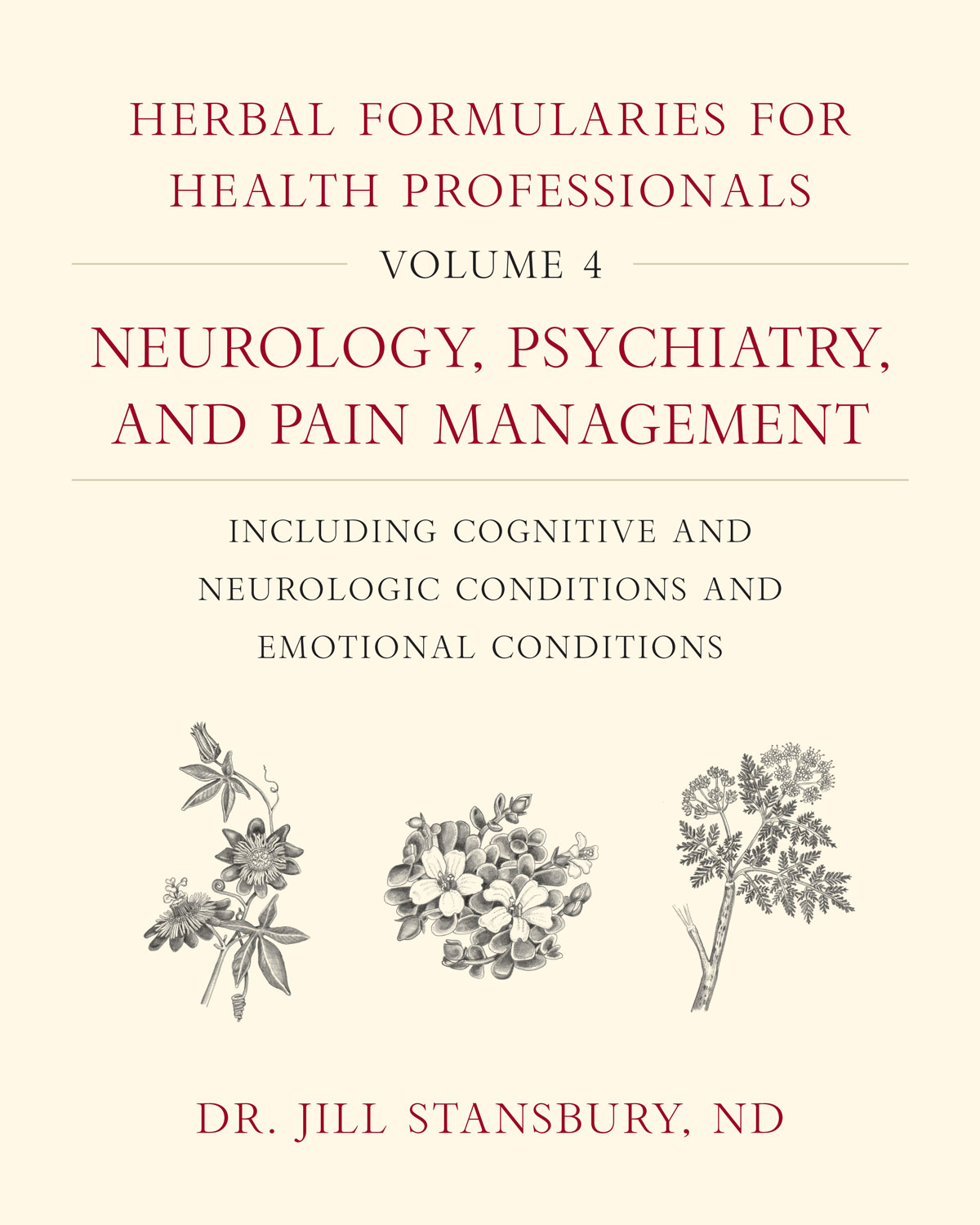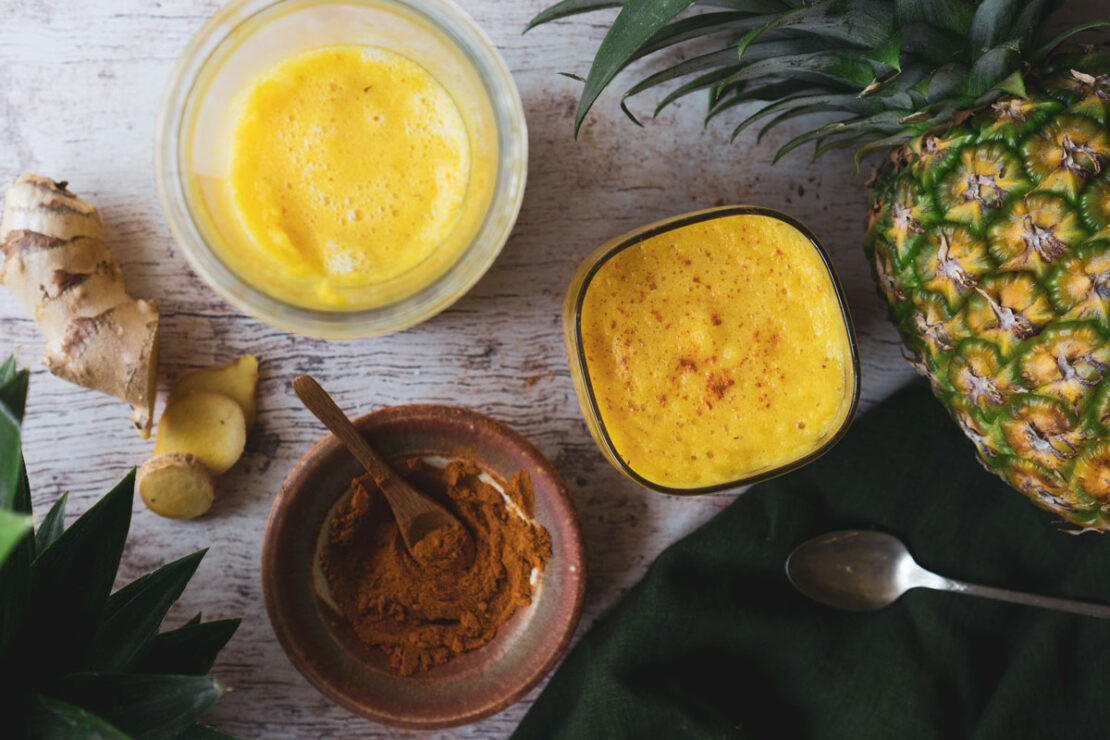
Ginger and Pineapple Anti-Inflammatory Smoothie
The following excerpt is from Jill Stansbury’s new book Herbal Formularies for Health Professionals, Volume 4 (Chelsea Green Publishing, July 2020) and is reprinted with permission from the publisher.
This all-purpose anti-inflammatory smoothie is both tasty and beneficial. It can be used after trauma, to help recover from surgery, or to accompany a tea or tincture to best treat inflammatory pain in a multipart protocol. Pineapple is the source of bromelain, an anti-inflammatory proteolytic enzyme. Ginger (Zingiber officinale) is a natural cyclooxygenase inhibitor, and it has numerous other anti-inflammatory mechanisms.

Anti-Inflammatory Smoothie Ingredients: A Closer Look
Pineapple (Ananas comosus) fruit
A mixture of sulfur-containing proteolytic enzymes known as bromelain is a component of pineapple fruit. Bromelain and the consumption of whole pineapple has an anti-inflammatory effect and may speed recovery following traumatic injuries. Consider bromelain as a complementary nutraceutical to treat neuralgia or to help speed healing following carpal tunnel surgery in cases of Bell’s palsy.
Bromelain attenuates inflammation due to aberrant production of prostaglandins and has fibrinolytic effects, so may also be appropriate to prevent reflex sympathetic dystrophy following hand or foot trauma or to help speed recovery following head trauma. Bromelain has been found to prevent the breakdown of curcumin, and the duo of bromelain and turmeric have been commonly used for pain and musculoskeletal inflammation in ayurvedic medicine. Whole pineapple is not commonly used as an herbal preparation in tincture or dry form, but isolated bromelain can be used as a complementary encapsulation to many teas and tinctures.
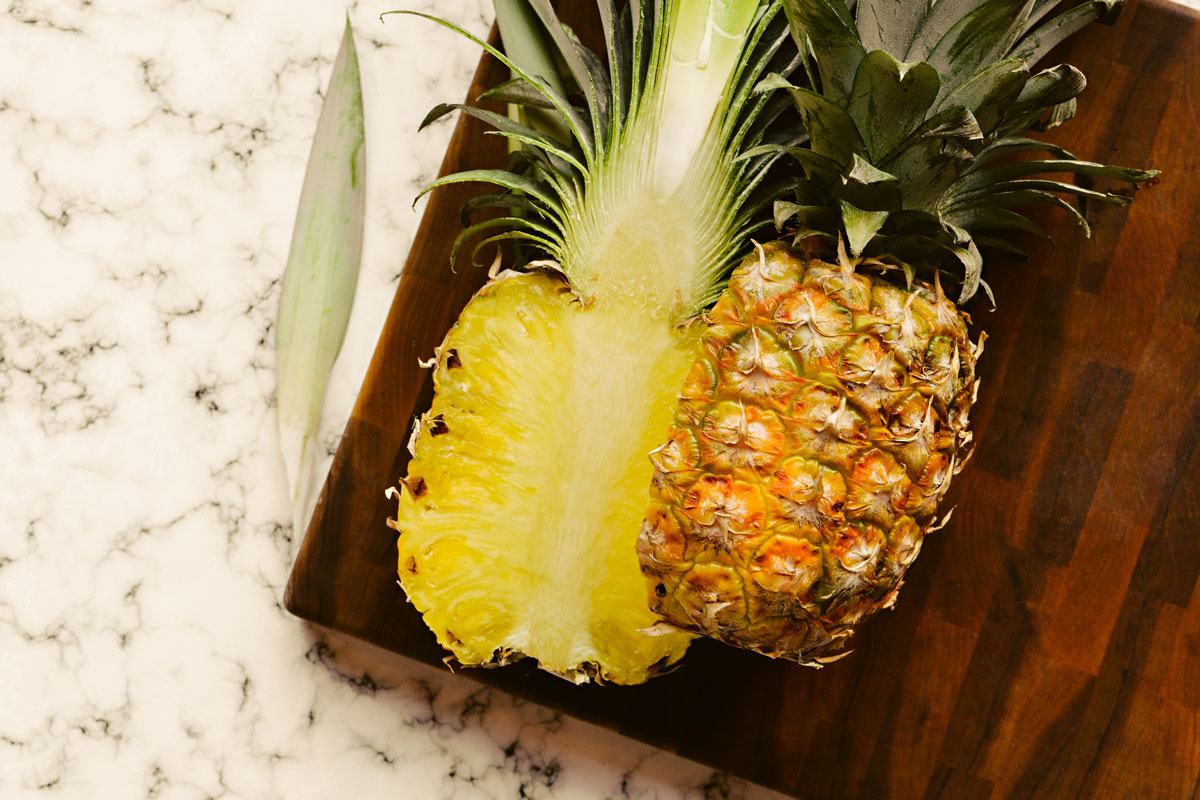
Ginger (Zingiber officinale) rhizome
Zingiber may improve neuralgic pain and inhibit inflammatory enzyme systems. Poultices of fresh ginger roots have traditionally been used topically over painful joints or acute neuralgia. Large and frequent doses appear to be the most effective. Ginger is also settling to the stomach, calms gas, and has an antispasmodic and warming effect. Zingiber is high in volatile oils including cineole, citral, borneol, and the antiseptic phenolic gingerol. Ginger is expectorating, diaphoretic, and a circulatory stimulant.
Turmeric (Curcuma longa) rhizome
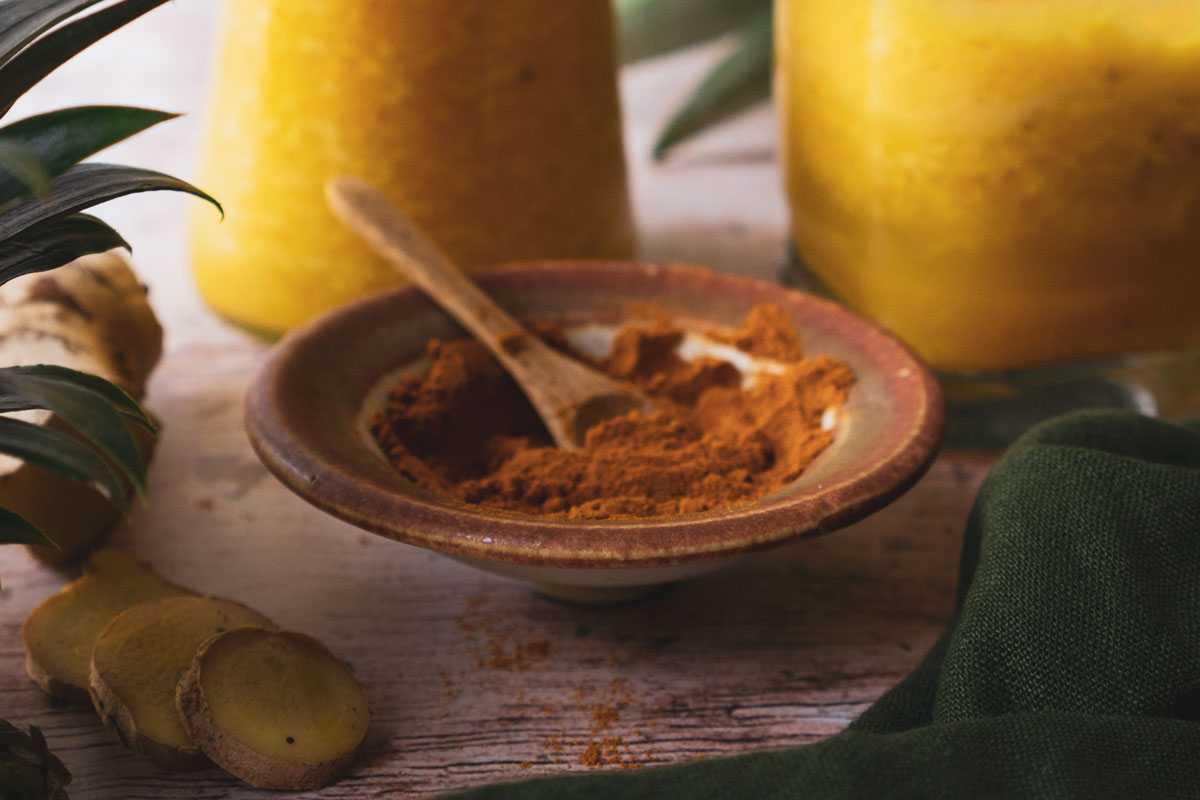
Turmeric contains the yellow-pigmented anti-inflammatory known as curcumin. Curcuma extracts are useful for inflammatory conditions including arthritis, trauma, and inflammation that is secondary to infection. Curcumin has been well studied and has been shown to encourage the breakdown of fibrin, inhibit platelet aggregation, and halt inflammatory processes by inhibiting leukotriene formation. Curcuma is an all-purpose anti-inflammatory and neuroprotective agent that can be included in formulas for neuralgia and neurodegeneration.
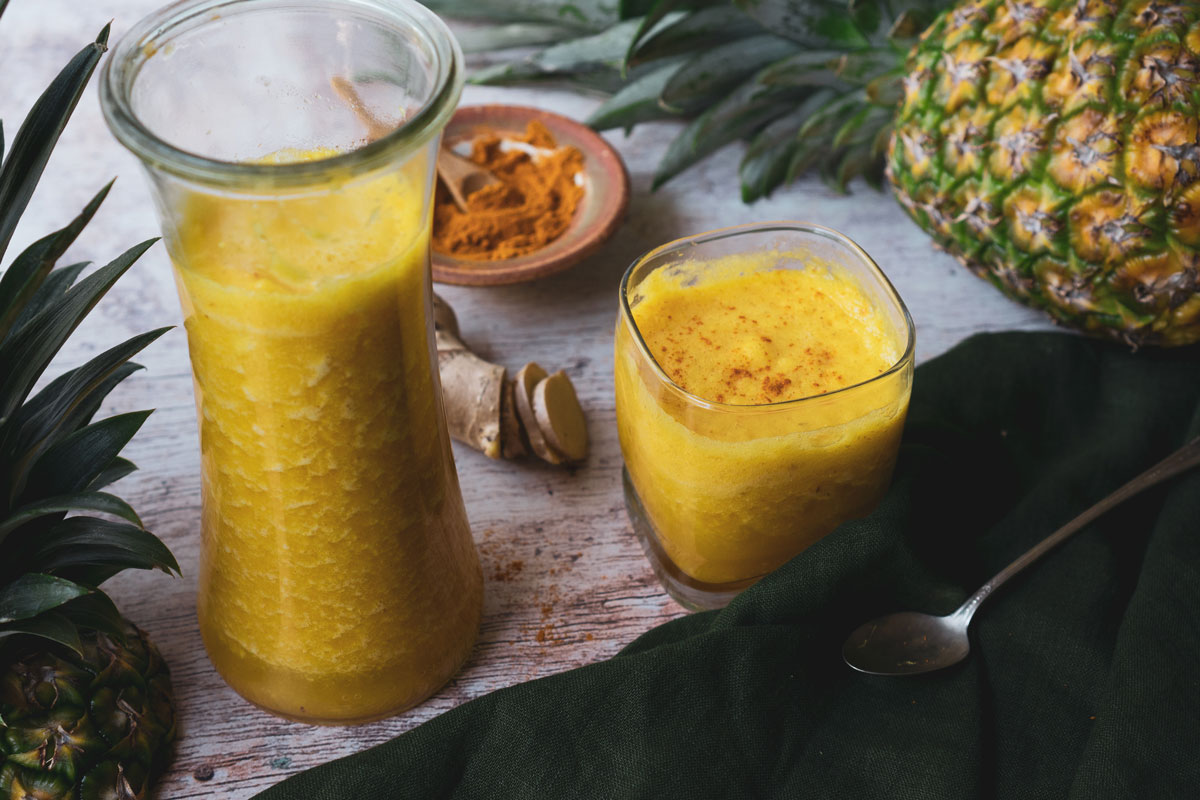
Ginger and Pineapple Anti-Inflammatory Smoothie Recipe
Fresh turmeric (Curcuma longa) root is increasingly available at the produce department of groceries and may be used instead of the dry powder where available. Including restorative foods in pain protocols will help to reduce reliance on pills and inspire beneficial dietary changes. Yield: 3 liquid cups.
- 2 cups (200 g) fresh pineapple
- 1 cup (250 mL) coconut water
- 1 tablespoon ginger root, peeled
- 1⁄2 teaspoon turmeric powder
- Combine all the ingredients in a blender and puree.
- Transfer the blend to a large glass and enjoy!
To use, prepare 1 or 2 anti-inflammatory smoothies per day and continue for a week or more post-surgically or in other situations where anti-inflammatory support is needed.
Dr. Jill Stansbury is a naturopathic physician with 30 years of clinical experience. She served as the chair of the Botanical Medicine Department of the National University of Natural Medicine. She remains on the faculty, teaching and leading ethnobotany field courses in the Amazon. Dr. Stansbury lives in Battle Ground, Washington, and is the medical director of Battle Ground Healing Arts. She also runs an herbal apothecary featuring many of her own custom formulas. She is the author of Herbal Formulas for Health Professionals, Volume 4 (Chelsea Green Publishing, July 2020).
